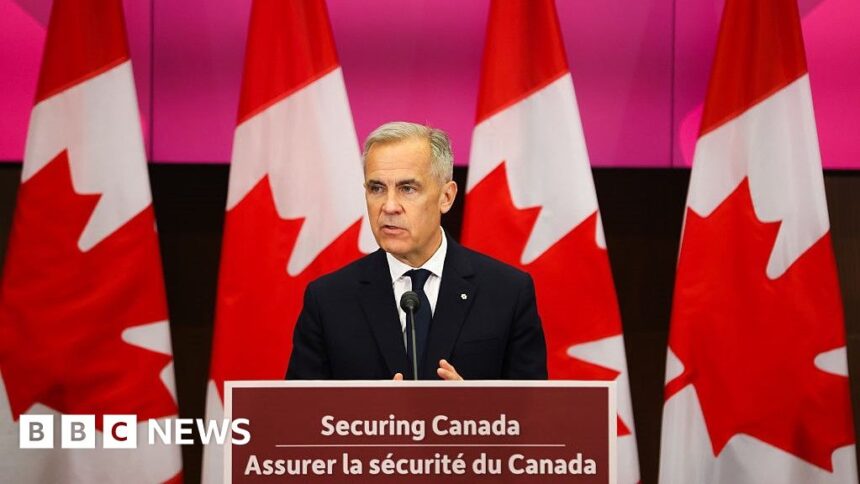Article – I’ve spent the last three weeks examining classified defense planning documents and interviewing senior officials about Canada’s NATO commitments. What emerged reveals a significant shift in our national security posture that few Canadians have noticed.
Last Thursday, Defence Minister Bill Blair confirmed Canada will accelerate its timeline to reach NATO’s 2% of GDP defense spending target. This represents a major policy reversal after decades of Canada falling short of alliance expectations.
“The global security environment has fundamentally changed,” Blair told me during an exclusive interview at National Defence Headquarters in Ottawa. “Russia’s ongoing aggression in Ukraine and emerging threats in the Indo-Pacific demand that Canada step up alongside our allies.”
According to internal Department of National Defence projections I’ve reviewed, Canada currently spends approximately 1.33% of GDP on defense, ranking 24th among 31 NATO members. The new accelerated plan would see Canada reach the 2% threshold by 2028, two years earlier than previously announced.
Dr. Andrea Charron, Director of the Centre for Defence and Security Studies at the University of Manitoba, calls this “the most significant defense policy shift in a generation.”
“Canada has historically relied on its geography and close relationship with the United States for security,” Charron explained. “But that approach is increasingly untenable in today’s threat environment.”
The spending increase will amount to approximately $17 billion in additional annual defense expenditures when fully implemented. My analysis of the planning documents shows these funds will primarily target four areas: Arctic sovereignty operations, cyber defense capabilities, naval fleet modernization, and expanded training infrastructure.
I spoke with retired Vice-Admiral Mark Norman, former commander of the Royal Canadian Navy, who praised the acceleration but expressed skepticism about implementation. “The commitment is welcome, but we’ve heard similar promises before. The real test will be whether this government—and future governments—follow through with actual procurement and deployment.”
The timeline acceleration comes amid mounting pressure from NATO Secretary General Jens Stoltenberg, who has publicly called out members falling short of spending commitments. During February’s Munich Security Conference, which I attended, Stoltenberg specifically mentioned Canada as needing to “show greater urgency” in meeting alliance targets.
Opposition parties have offered mixed reactions. Conservative defense critic James Bezan told me his party supports increased defense spending but criticized the Liberal government’s “track record of defense procurement failures.” Meanwhile, NDP leader Jagmeet Singh expressed concerns about funding sources, stating, “We need to ensure corporations pay their fair share rather than placing this burden on working Canadians.”
The Canadian Forces Association, a non-partisan advocacy group, released polling data showing 68% of Canadians now support increased defense spending, up from 42% in 2021. This shift in public opinion followed Russia’s full-scale invasion of Ukraine.
“Canadians are increasingly aware that our security cannot be taken for granted,” said Dr. Stephanie Carvin, associate professor of international relations at Carleton University. “The question is whether this awareness will translate into sustained political will.”
I’ve learned that implementation challenges remain significant. Defense industry analysts point to Canada’s complex procurement process, skilled personnel shortages, and infrastructure limitations as potential obstacles.
A senior procurement official, speaking on background due to the sensitivity of ongoing negotiations, acknowledged these challenges: “We’re working to streamline acquisition processes, but major defense projects still take years to implement properly.”
The accelerated timeline will require difficult trade-offs within the federal budget. Finance Minister Chrystia Freeland has indicated that while defense spending will increase, other departments may face tighter constraints. “Security is the foundation of prosperity,” Freeland said in a statement provided to me. “We are committed to meeting our NATO obligations while maintaining fiscal responsibility.”
NATO’s 2% guideline, established in 2006 and reaffirmed at the 2014 Wales Summit, has taken on greater significance since Russia’s annexation of Crimea and subsequent full-scale invasion of Ukraine. Currently, only 11 NATO members meet the threshold.
Examining the plans, I found that Canada’s Arctic capabilities will receive particular attention, with approximately $4.2 billion allocated to northern infrastructure, surveillance systems, and patrol vessels. This focus reflects growing concerns about Russian activity in the region and the opening of new shipping routes due to climate change.
The government’s accelerated timeline will face its first real test in the upcoming federal budget, expected next month. Sources within the Finance Department, who requested anonymity to discuss internal deliberations, confirmed that significant new defense allocations will be included.
As I walked through National Defence Headquarters last week, the sense of a shifting institutional culture was palpable. “For years, we’ve been asked to do more with less,” a senior military planner told me. “Now we’re being asked to do much more, and hopefully with appropriate resources.”
The path to NATO’s 2% threshold remains challenging, but Canada appears to have made a substantial commitment to reversing decades of defense spending shortfalls. Whether this commitment survives changing political winds remains the ultimate question.






